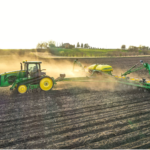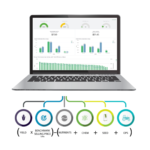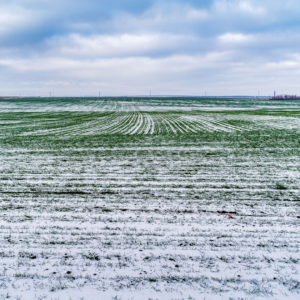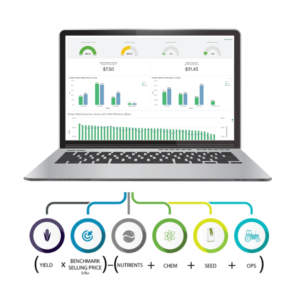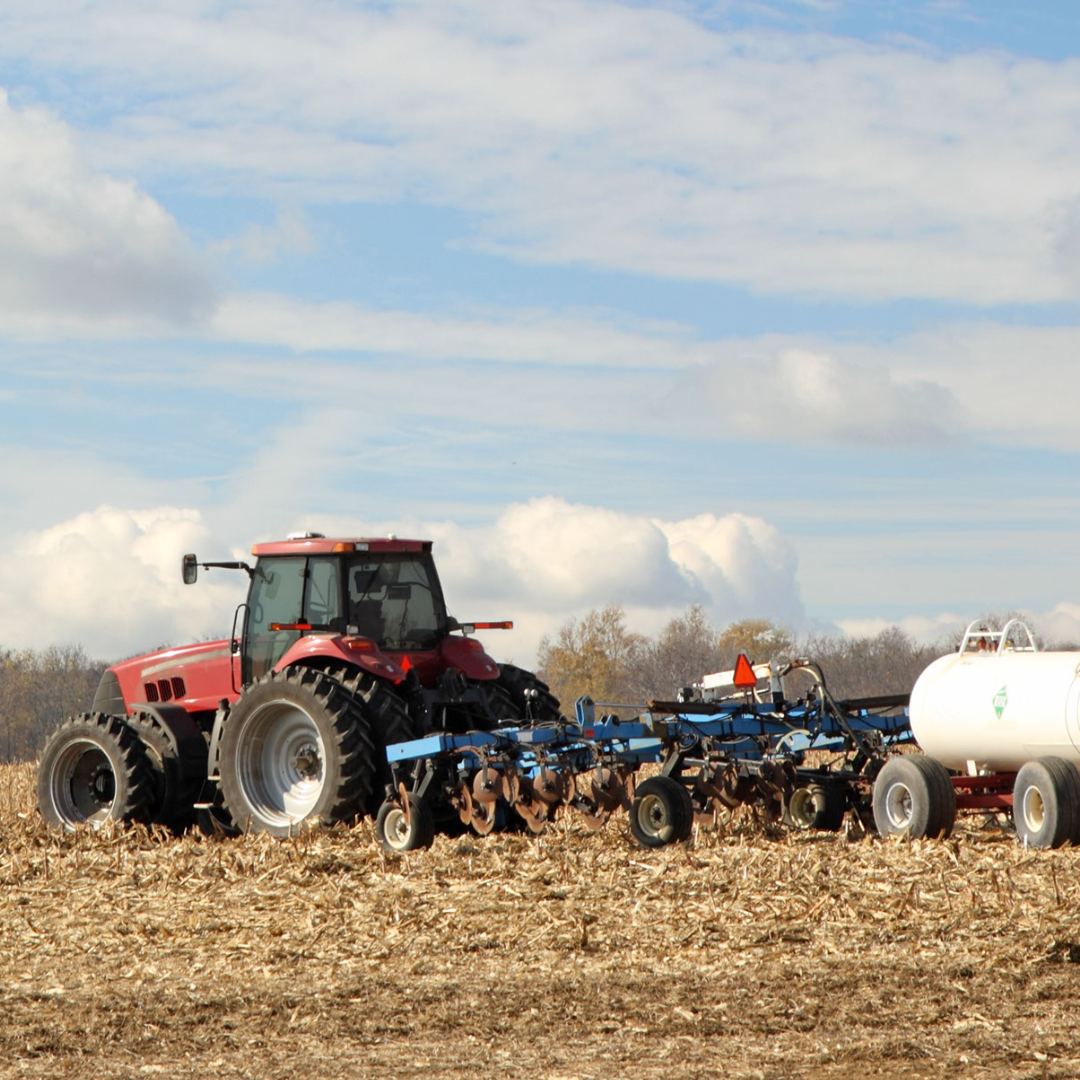
Kevin Kruize, Strategic Account Manager for the Northern Region at Premier Crop Systems discusses Variable Rate Fertilizer and the options growers have to utilize it on their operation.
If you are enjoying the show, tweet us using #PremierPodcast
RENEE HANSEN: Welcome to the Premier Podcast, Kevin. It’s good to have you back here.
KEVIN KRUIZE: Hi. Thanks for having me, Renee.
RENEE HANSEN: Yeah, why don’t you do just a quick introduction of yourself one more time?
KEVIN KRUIZE: Sure. Yeah, my name is Kevin Kruize. I’m the Strategic Account Manager for the Northern Region for Premier Crop Systems. I live in southern Minnesota.
RENEE HANSEN: Great, thanks. Welcome again today. And today, we’re going to talk about fertilizer — the increasing, rising cost of fertilizer — and the need to variable-rate your fertilizer. So, Kevin, can you just tell us what some of the benefits are to variable-rating your fertilizer or your nutrients?
KEVIN KRUIZE: When you think about variable-rating nutrients, there are lots of different things. This year, in particular, with the rising fertilizer costs, there are lots of different ways to look at it. If you take out the cost aspect, really, it’s going down to making sure your different environments of your farm and your fields are getting the adequate nutrients that they need to raise the highest yield and crop potential in each part of the field. When you look at input and the input costs this year, the mentality and the way you want to look at it and how you want to approach it might be a little bit different. You might not be on a build year. You might want to just maintain some of those really high-producing areas and make sure that if you’re limited in nutrients in certain spots, you want to hit those spots to make sure that you’re not losing profit by not fertilizing it because that can easily happen by under-fertilizing.
RENEE HANSEN: Yeah, elaborate a little bit more. You said you want to produce the highest raised crop potential. You didn’t say yield, so just tell me a little bit about that.
KEVIN KRUIZE: Right. Yeah, a lot of things at Premier Crop, when we work with growers in their operations, yield, obviously, is a huge driver, right? We want higher yields, right? But sometimes the highest yield necessarily isn’t the most profitable, so we want to try to raise and help them raise the most profitable yield that they can across their whole operation. So, when we talk about that with growers, we really break down their fields into different producing parts of the field, where you have your — we like to call them — A Zones, where it’s really aggressive, really driving yield. We want to make sure that we’re hitting the right nutrient targets on those fields and those parts of the field especially, just because we typically find that is your lowest fertility area. Because, over time, you’ve been bringing down those nutrients with high-yielding crops, right?
So, when you start looking at some of your poor-yielding areas in the field, yeah, you might not need to spend any money on that part of the field this year, in particular, because putting that nutrient there might not be getting you any benefit from yield. Because yeah, you want to maybe maintain those areas, but if it’s not going to give you any yield potential for this particular year with the cost of the inputs, you definitely don’t need to spend some money there.
RENEE HANSEN: Well, and it’s not only not spending the money there too, I mean, because you don’t want to over-apply. You don’t want to under-apply, but you’re also being a better steward of the land. So I know that you, in the field, talk about how you could be a better steward utilizing variable-rate in your fertilizer. So talk about that a little more.
KEVIN KRUIZE: Yeah, being a better steward, utilizing variable-rate fertilizer, is a major benefit. Especially if you have different types of regulations and rules in your territory, you want to make sure that you’re not over-applying in areas that don’t need it. It’s just a waste of dollars to your acre and reduces your profit. And if you already have a significant amount of nutrients there, it’s a potential for runoff and going to places that you necessarily don’t want it to be.
RENEE HANSEN: Yeah, so what would a potential cost difference — I don’t know if you have this answer — but what would the potential cost difference be from a flat rate to a variable rate? Do you have a hypothetical situation?
KEVIN KRUIZE: I actually was working with a customer and some groups here earlier this fall when we were going into it. And what I did was I took a look at three different operations, and I wanted to basically figure out how many acres already meet adequate fertility levels, whether it’s where you want it to be for your phosphorus test or your potassium test. And by doing that, I was able to see on three different operations — one in southern Minnesota, one in west-central Minnesota, one in South Dakota — completely different farmers, completely different territories: on the phosphorus for the adequate tests, we were looking at about 50% of the acres. Not quite. About 48% of the acres didn’t necessarily need a phosphorus application. And there were about a couple growers: up to 80% of their acres didn’t necessarily need a potassium application this year. But one of the growers: about 90% of his acres needed some sort of potassium. But when you look at those and put those numbers together, we’re really seeing about a $20 to $40-an-acre swing from using variable rate and putting it exactly where it needed to be versus flat-rating it. If they would’ve flat-rated the whole field based off of even a pretty low spread of 100 pounds of MAP and a 100 pounds of potash, just by putting that 100-pound spread in the areas that were less than adequate, it was a $23 to $30-an-acre savings. That would include your grid sampling fee. So, even above and beyond any soil sampling costs, you’re still saving yourself $30 an acre by variable-rating it versus flat-rating all your fields.
RENEE HANSEN: Then, on top of that, the potential data that we see, you can see that it might be higher yielding in that area too. The economic benefit is significant.
KEVIN KRUIZE: Right. Yeah, most of the time, we have lots of different analytics and reports that help us identify where the highest-yielding potential is versus not. And a lot of the times, when we see the correlations, the highest fertility areas are your lowest-yielding areas anyway. So, by flat-rating a straight rate across all your acres, thinking that’s the easy button and it’s going to save you money, really, in turn, you’re actually spending money in areas that don’t need any fertilizer. And, too, they’re your lower-yielding areas anyway, so they’re not going to give you any return on investment for this year. So, yeah, it’s all about trying to understand your fertility and how it works across your farm.
RENEE HANSEN: So someone could argue that the grower is — depending on whether they have the equipment to do it themselves or not — the grower would have to spend more to have it variable-rate applied. Plus they’re also paying a company like Premier Crop, so those dollars add up. Is there an economic benefit that you see, even though they’re paying for services that are having/utilizing variable-rate fertilizer versus the outcome?
KEVIN KRUIZE: When you start looking at your fields, and if you’re not soil sampling it to a certain level or taking a look and seeing how your yield compares to your different attributes across your farm, it’s kind of a shot in the dark if you’re making any money from the different things that you’re doing or not. There are so many people, or there are so many examples out there where people are just running a standard variable-rate prescription that sometimes they don’t even know what it actually is standing for. So, yeah, they might feel really good that they’re putting a variable-rate spread down. But if you can’t look at the prescription, understand what it means agronomically to your farm, you might be hurting yourself. So it’s really taking a look, stepping back and understanding the economics of what you’re doing. Then, when you do that, like with Premier Crop or spending that extra few dollars to do variable-rate spreading applications, it really, really starts paying you back pretty quickly once you can kind of understand the data.
RENEE HANSEN: Kevin, do you have any specific examples of how you’ve helped a farmer improve their soil fertility utilizing variable-rate fertilizer?
KEVIN KRUIZE: Yeah, there are probably quite a few of them, but one that really sticks in the mind is one group of growers I worked with. I started working with them in 2007, and just a great group of guys. We started looking at their fertility. They came to us and were wondering: ‘How can we improve yields?’ And: ‘Do we need to do some grid sampling and whatnot?’
So we started diving in and taking a look, and we noticed on a couple of their fields that their average soybean crop yield was probably right around 35 bushel on average, which was probably about 20 bushel lower than the county average or that average of that territory. And on their corn, they were running about a 170 to 175-bushel average. But there were a couple of fields that were actually running up in the 200 and up in the 60-bushel beans. We started looking at what the difference was — and they were rented farms — and they had significantly higher fertility levels. So, then, we started doing some good sampling and looking in-depth at what their fields looked like. They had been doing a great job of collecting yield history in the past, which definitely can be a big help in trying to understand how your fields are performing. But what we were able to do is we basically identified the high-yielding areas of each field and the low-yielding areas. And we implemented a pretty aggressive fertility program.
Within five years, we had doubled their soybean yields. They were at 30-bushel soybeans. Now, they’re running 60 to 65-bushel, on average, soybeans, and their corn is running 220-plus. I just actually recently looked back at all of our field variance reports, so we can see, over the years: what are their consistent yield trends on every single field? And they’re still running above 215 average consistently on their corn. And there are years of 75-bushel average beans, 80-bushel beans. I mean, it’s just unbelievable the different things that they have accomplished by implementing a variable-rate strategy, using grid sampling and their zones to be able to figure out where they need to put the best dollars.
RENEE HANSEN: So year one: did they see — I don’t want to say a loss — but did they spend a lot more in year one to get kind of a baseline or a level? Or was it just incremental that you saw over the years?
KEVIN KRUIZE: They definitely did spend quite a bit more in the first couple years. But, I mean, when you think about that, if they grew 30 bushel more per-acre beans, let’s say it’s at 13 bucks. That’s $455 per acre that they’re making now. And at 50-bushel corn at five bucks, that’s $250 worth of yield and profit that they’re bringing back in. So that’s a lot of extra money they could now spend on fertility to basically maintain those levels where they’re at, to keep pushing up and driving their yield ceilings.
Yeah, it’s definitely a little bit of investment. I’m not necessarily saying today, with the input pricing, to do that, but you need to grid sample or do some sort of intensive soil sampling to understand your fertility and make some decisions. Understand where your high-yielding areas are versus your low and treat those the way you can, just to get through this year or the next couple years. Hopefully, the prices turn around, and we can be really profitable. But yeah, it’s just one of those things we’ve got to manage, right? It’s just the risk that we all have to endure, and having the right plan is always going to come out more positive than not.
RENEE HANSEN: Yeah, and the profitability definitely makes a difference. So I have a question for you because I’m just curious. So, in those first two years, were the rates incredibly high that you were applying? Or not necessarily?
KEVIN KRUIZE: No, they weren’t necessarily because we, like we talked about earlier, we talked about: what are their yield goals? What is their part-per-million soil test goal? So, when we started identifying their high-yielding areas versus their low-yielding areas, yeah, we didn’t want to build the low-yielding areas. We cut input costs a little bit there and focused on the areas that we really knew were going to produce higher yields. And that’s where we focused most of the dollars. Once we got those up, those were carrying some of the lower areas, so we could figure out how to improve those lower-yielding areas a little bit quicker too.
RENEE HANSEN: Yeah, because they didn’t go from year one, from — what’d you say it was? — 30-bushel beans to 60. They probably went from 30 to 40 or 30 to 35, and so it was just incremental.
KEVIN KRUIZE: Yeah, it took about four to five years, and they had doubled it. Yep, consistently. Now, just looking back here, in the last five years, they’ve held those yields, and now they do a lot of crop removal maintenance and still try to push some of these really high-yielding areas even farther. Their yields will still continue to rise on average because they’re really focusing their input on the right areas of the field and not just trying to blanket everything.
RENEE HANSEN: Yeah, so I’m curious: what has their reaction been when you showed them where they were five years ago?
KEVIN KRUIZE: They’re pretty happy. Very happy. They were able to upgrade some equipment. They’re doing variable-rate planting. They have a bunch of different things that they were able to do because of this. Very happy. Very positive.
RENEE HANSEN: Yeah, and it just started with their soil fertility, which is awesome.
KEVIN KRUIZE: Yep.
RENEE HANSEN: Great. Yeah, and I can say that we see that time over time. We can prove that it pays, and it does pay for the grower. But how does a customer — like how would a grower — get started with Premier Crop to do a variable-rate fertilizer plan?
KEVIN KRUIZE: It’s pretty easy. We have quite a few agronomy information advisors throughout some of our territory. You can easily log into our website — www.premiercrop.com — and send us a message if you’re curious. Or we also have lots of partners, with all our Premier Partners across most of our states in the Midwest here, and they’re fantastic. They have great staff that can help you out, as well. So, wherever you’re at, we can help you get connected with one of our partners or work directly with one of our AIAs if you’re in one of those regions.
RENEE HANSEN: Walk me through some of the agronomics that a grower would talk about. Let’s say it’s the first time they’re writing a prescription. They really want to be more involved. So what are some of the questions that you would ask them to get started?
KEVIN KRUIZE: It’s really simple, really. A lot of the things whenever I go on to talking about fertility programs and training our partner staff, or even talking with growers through it, are two things. One: what’s your yield goal? Where do you really want to see your farm at, right? And two: what are your soil test goals? Where do you want to end up being? Is it 25 parts-per-million phosphorus? 30 parts-per-million phosphorus? And just kind of get a basic understanding of teaching them what it means to raise your soil test fertility. And what does it mean when you actually say: ‘Well, I want to shoot for 240-bushel corn.’ Do they know how much 240-bushel corn removes from the soil? Because that’s a huge number. I was doing some basic figures.
A lot of guys talk about 200-bushel corn and 50-bushel soybeans, which might be, actually, a little bit low with some of the average yields that we’re seeing nowadays. But if you just looked at 200-bushel corn and 50-bushel soybean, that’s roughly 225 pounds of MAP and 200 pounds of potash that are removed from your soil with just those two years of crop removal. So, if you’re not spreading that much on an every-other-year basis, you’re mining out your fertility, right? So, obviously, if you have parts of your field that you know are lower yielding than that, yeah, you’re probably building those areas up a little bit. But those areas that you know are running 250 or maybe 70 to 80-bushel beans? You’re really mining those nutrients out.
So it’s just trying to help them understand the different aspects of how fertility works in your field. How soil samples can help you get a better understanding of what that looks like. Then taking it back to yield and profitability at the end.
RENEE HANSEN: Yeah, really marrying those agronomics and economics. Well, great. Thanks, Kevin. Really appreciate you talking about this today, and they can get a hold of Premier Crop, like you said, at www.premiercrop.com if they want to start working with somebody. Is there anything else you want to add?
KEVIN KRUIZE: No, I just hope everybody’s having a safe fall and hope everybody has started working on their plans for 2022. And yeah, we’re here to help, and give us a shout if you need a hand.
___________________________________________________________________________________________
- For more helpful tips and insight on all things data and agriculture, visit our blog at http://info.premiercrop.com/blog
- Curious about precision ag? Download our 5 Steps to Getting Started Guide: http://info.premiercrop.com/5-steps-guide
- Ready to cut through the bull? Download our No Bull Guide to Precision Ag: http://info.premiercrop.com/field-profitability-guide
- Podcast provided by Premier Crop Systems. Learn more about us at https://www.premiercrop.com

